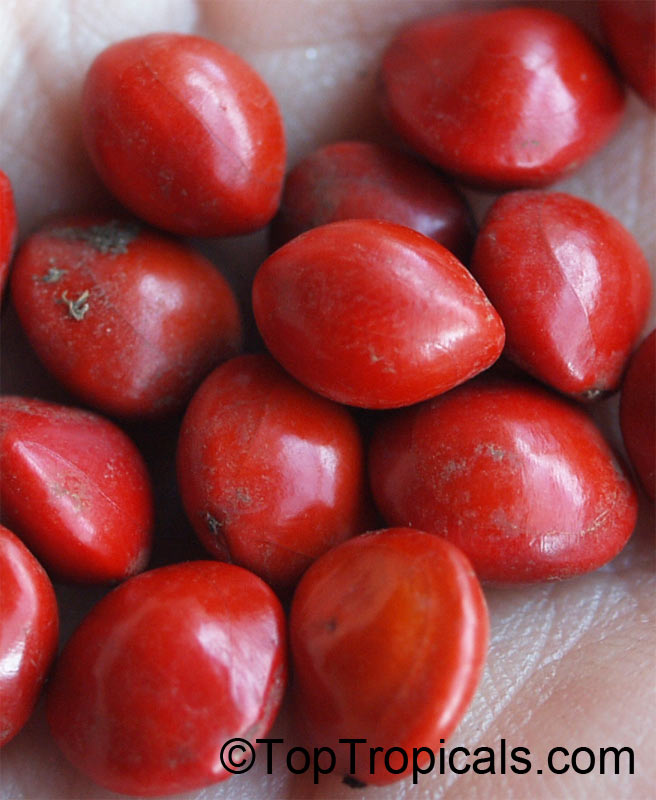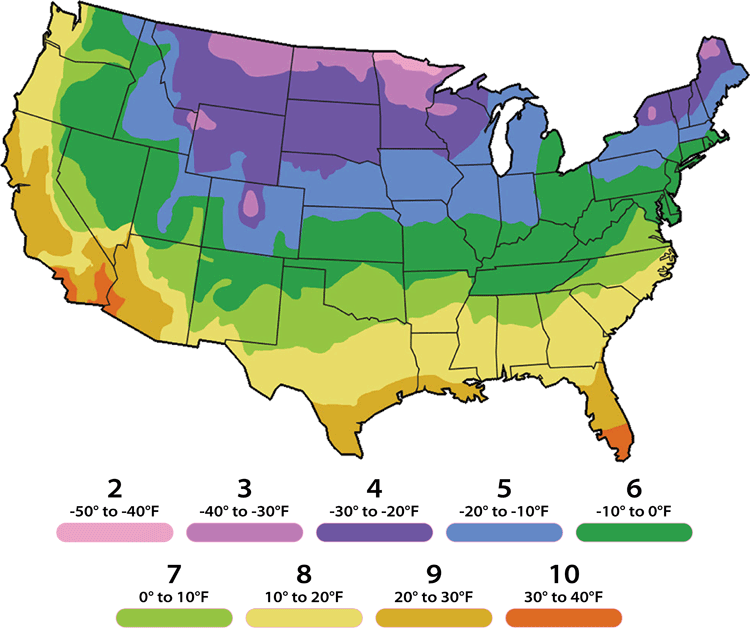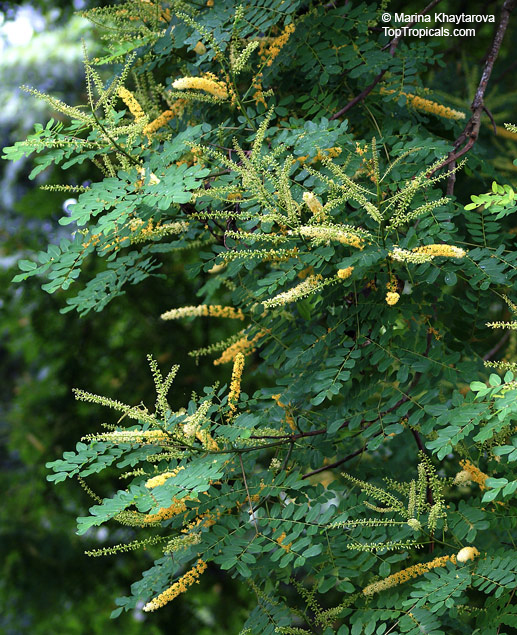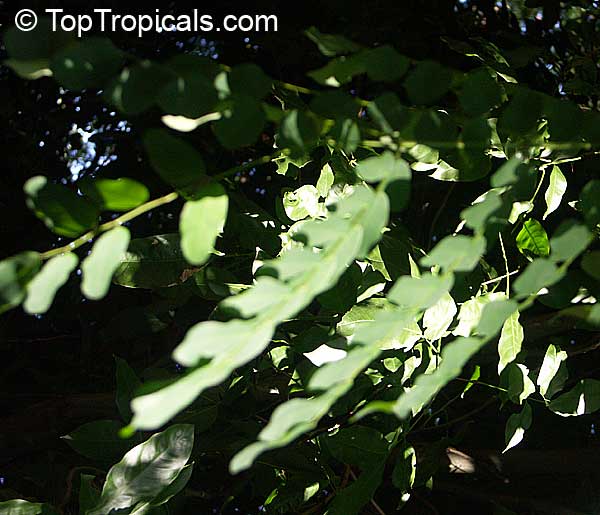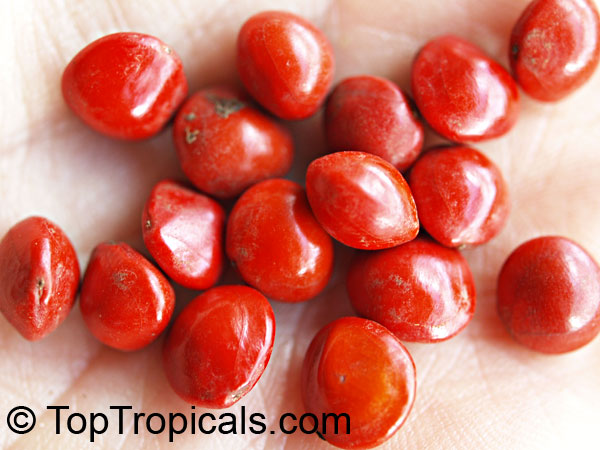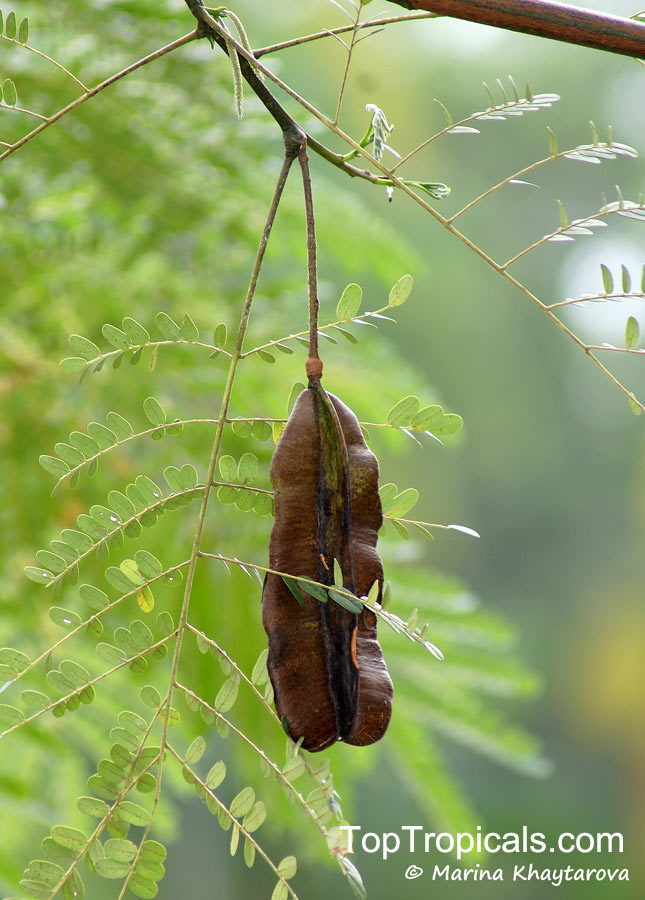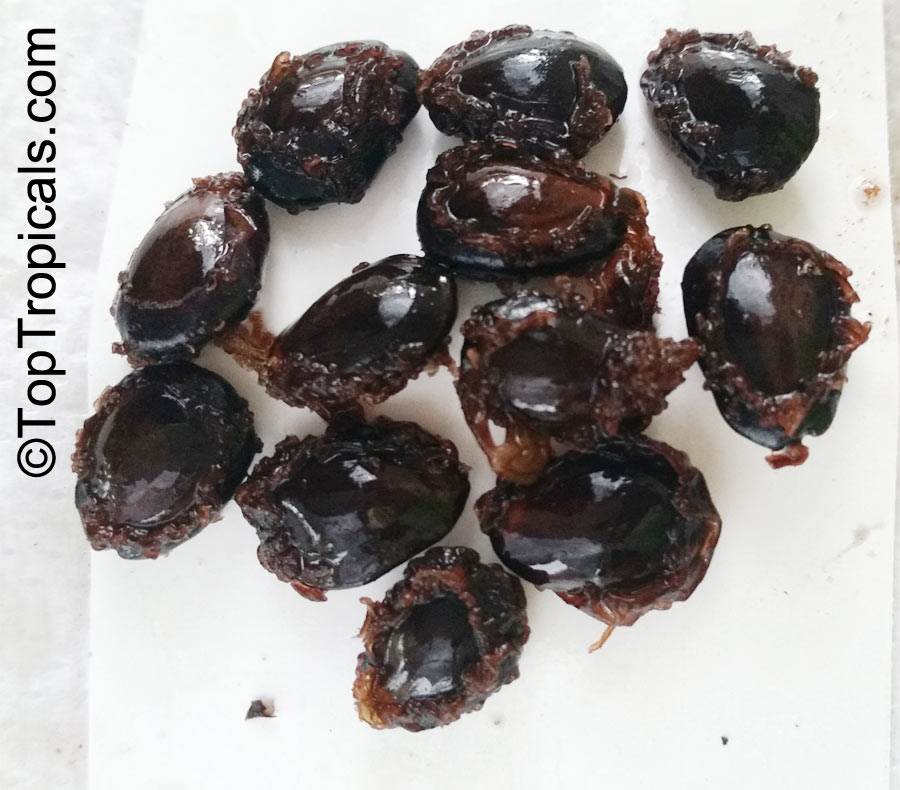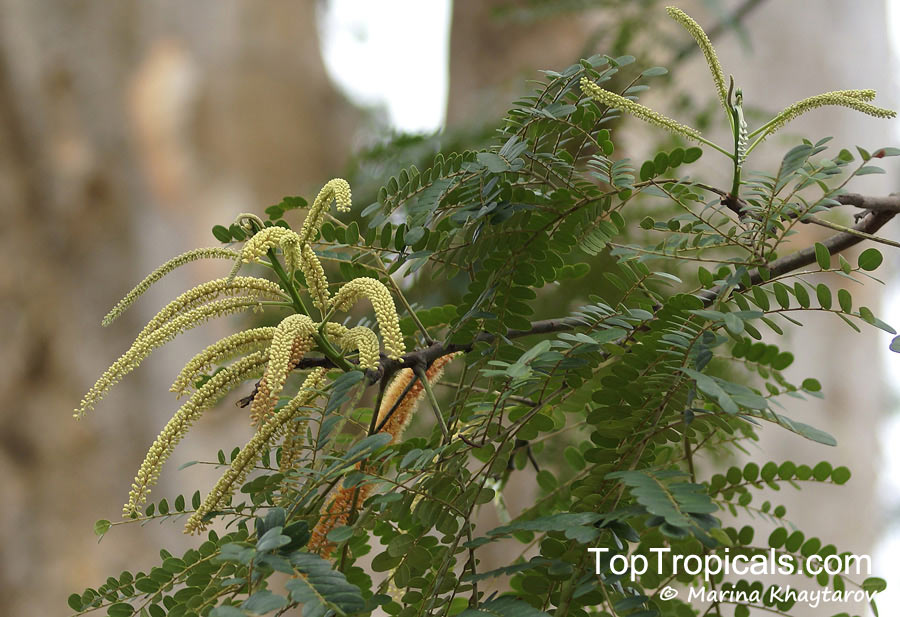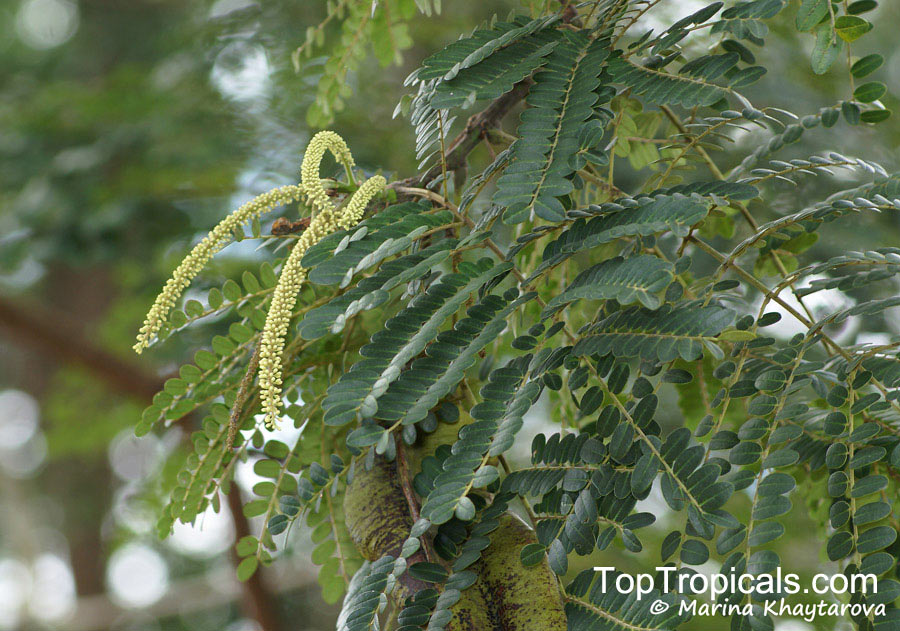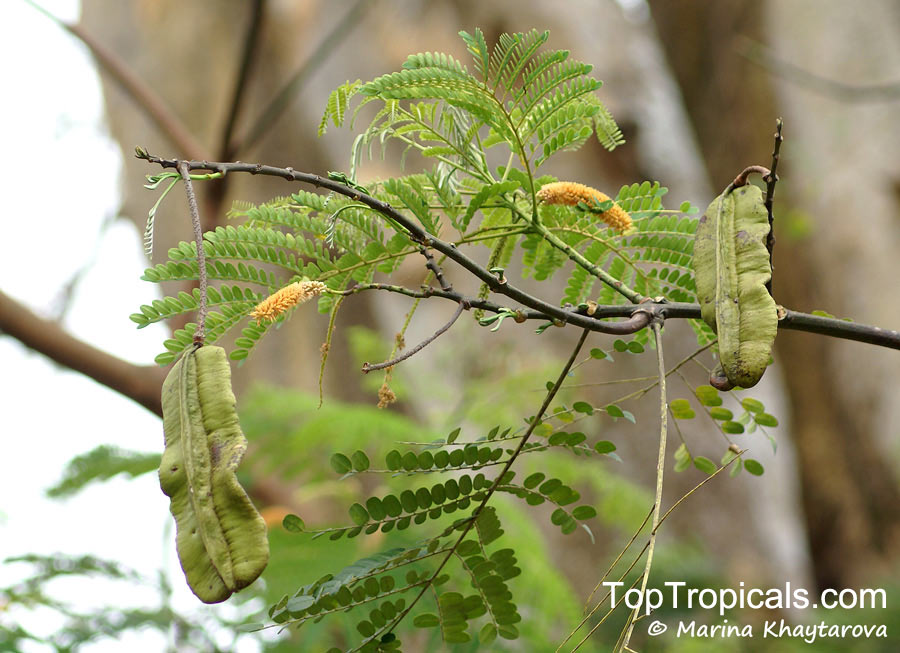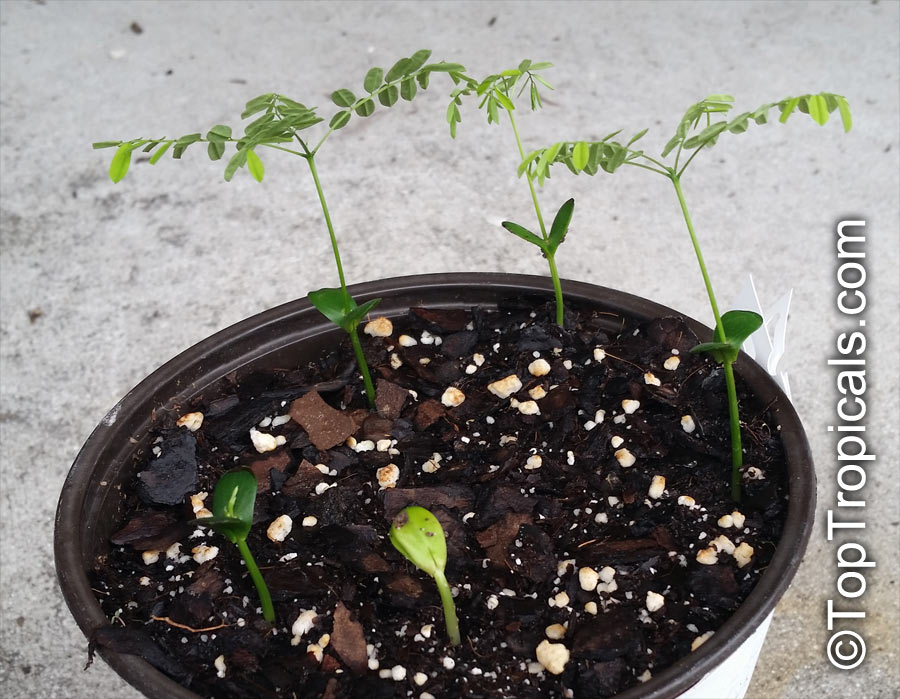Plant search results - Adenanthera | Top Tropicals Plant Encyclopedia
| Number of plants found: 2 |
Adenanthera pavonina, Adenanthera gersenii, Adenanthera polita, Corallaria parvifolia
Red Sandalwood, Coral Bean Tree, Saga, Sagaseed Tree, Red-bead Tree, Raktakambal, KokrikiFamily: Fabaceae
Subfamily: Caesalpinioideae
Origin: India











A medium-sized tree up to 15 m high, Adenanthera pavonina is native to India and Malaysia. It has been planted extensively throughout the tropics as an ornamental and has become naturalized in many countries.
The tiny flowers are said to smell vaguely like orange blossoms.
The slender flattened pods become twisted as they split open at maturity to release up to 12 brilliant red, lens - shaped, extremely hard seeds. The ripened pods stay on the tree for some time. The seeds are used in necklaces and ornaments, as beads in jewellery, leis and rosaries. They were also used in ancient India for weighing gold. The seeds are curiously similar in weight. Four seeds make up about one gramme. In fact the name "saga" is traced to the Arabic term for "goldsmith".
In Malaysia and Indonesia, the trees provide shade and planted as "nurse trees" in coffee, clove and rubber plantations.
Although the raw seeds are toxic, when cooked they are edible: are roasted, shelled and then eaten with rice in Java, Indonesia. In Melanesia and Polynesia people call it the "food tree". The seeds are said to taste like soy bean. The young leaves can be cooked and eaten, but usually only during famine.
The hard reddish wood of the red sandalwood tree is used for cabinet making. A red dye, obtained from the wood, is used by Brahmins to mark religious symbols on their foreheads. A red powder made from the wood is used as an antiseptic paste. In Ancient Indian medicine, the ground seeds are used to treat boils and inflammations. A decoction of the leaves is used to treat gout and rheumatism. The bark was used to wash hair.
Tetrapleura tetraptera, Adenanthera tetraptera
Aidan Tree, PrekeseFamily: Fabaceae
Subfamily: Caesalpinioideae
Origin: West Africa











Tetrapleura tetraptera (Aidan Tree) is a small deciduous tree native to West Africa, belonging to the Meso-Melanesian family. It generally grows between 10-20 ft tall, and is semi-evergreen in nature, losing its leaves late in the season or in the early months of winter. It usually prefers full sun but can also do well in semi-shade. This beautiful tree boasts off-white, very fragrant flowers that produce an abundant array of fruits. Not only does this plant attract butterflies and hummingbirds, it is also used ethnomedically and as a spice or herb.
The fruits of the Aidan Tree are particularly healthy and nutritious. They produce a drug-like substance, known as ethiopon, that is used for a wide range of conditions such as malaria, jaundice and even skin diseases. The fruits are also edible. They are rich in a variety of vitamins, minerals and antioxidants, and have been proven to help lower blood pressure, improve digestion and reduce stress. Generally speaking, a single tree can produce between 10-15 kg of fruit in one season, depending on the climate.
When grown in USDA Zone 9-11, Tetrapleura tetraptera is a relatively low maintenance plant - even though regular watering and fertilizing is necessary to maintain good health. During winter, it should be sheltered from frost since it is sensitive to cold temperatures, and it is best to use a large container to protect its delicate roots. In addition, this plant prefers well-draining soils and requires an area with plenty of shade, as it is susceptible to sunburn.
Use link to repeat this search:
https://toptropicals.com/cgi-bin/garden_catalog/cat.cgi?find=Adenanthera&search_op=and&keyword_op=and&language=e&number=10
&no_change_lang=1&user=tt&sale=1&first=0
